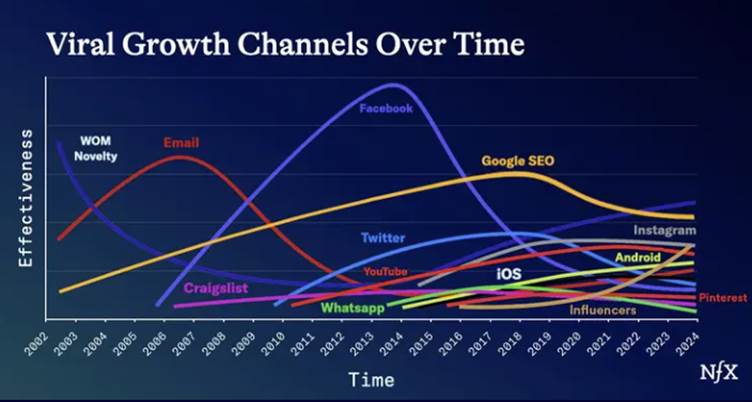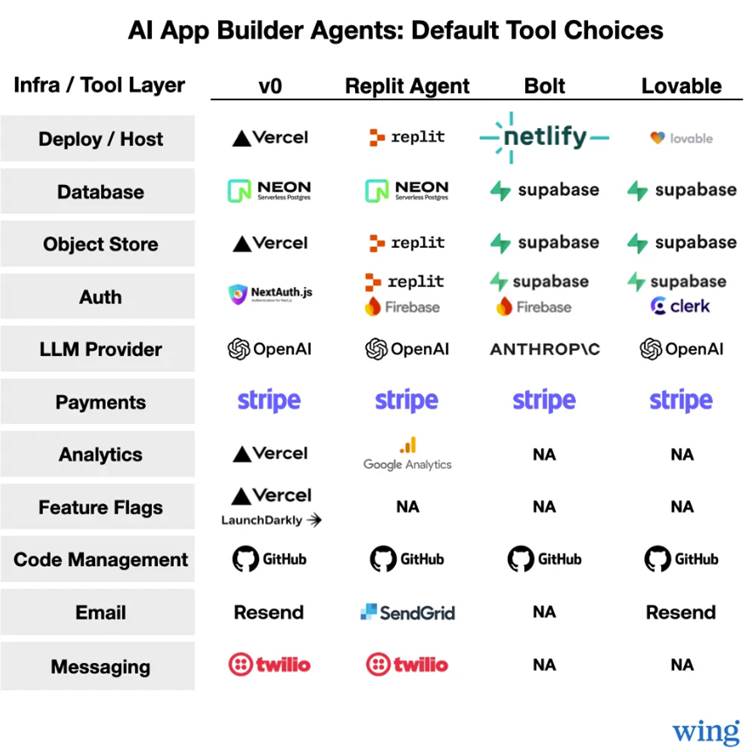This isn’t to say that building a product that solves a real problem isn’t important – it is. But as soon as you do and there are signs that it’s working, expect 1,000 fast followers to jump in with a similar product and get to feature parity faster than they ever could before. When AI is such a powerful force multiplier on coding, the cost of creating software becomes functionally zero.
A lot of my conversations with other VCs sound like this today: “We just invested in this one [insert vertical e.g. legal] AI startup with a great wedge. But then we heard [insert another VC, e.g. Sequoia] backed a competitor with exactly the same wedge. And so had [insert another VC, e.g. General Catalyst].
Even in fields as traditionally difficult as robotics, we may see three AI robotics startups in one week tackling the same problem with marginal differences in approach.
This all leads me to conclude: distribution is king. The challenge has moved from “how do I create the product that solves the problem?” to “how do I make this product discoverable and a no-brainer to buy?”
The pessimist would say this shift benefits incumbents far more than it does startups. So what can founders do about it?
Peter Fenton of Benchmark advises to “look for openings in distribution” during platform shifts. Right now, those openings are appearing. While traditional channels (like outbound sales and partnerships) still matter, the scope of this article will focus on the emerging ones.
1. Dominate answer engine optimisation (“AEO”)
Startups once thrived on low-cost channels (e.g. Meta/Google paid ads, SEO, email). But those have grown noisy and expensive. James Currier of NfX created the diagram below to show how the effectiveness of these existing channels has faded or grown over time.

Now, AEO is the new channel all our founders are talking about. How do we get surfaced by ChatGPT, Perplexity and the like when someone begins their search there instead of on Google? Smarter folks than I have talked in detail about the strategies available. For example, Kyle Poyar’s article at Growth Unhinged and Ethan Smith’s episode on the Intelligent Marketer. But to summarise crudely: if you can get your product mentioned on Reddit, affiliate sites or niche blogs, you could get a significant head start.
2. Become the default choice for AI agents
In a world where AI agents will be making decisions, how do you become the default for them?
Our portfolio companies, Supabase and Stripe, demonstrate the power of that strategy by becoming the default choice for databases and payments for some of the fastest-growing no-code app builders like Lovable and Bolt.

Last week, I prompt-bashed three apps for my day-to-day life (a parental to-do list for my husband and me, a workout tracker to compete against my friend, and a gratitude journal to force me into the habit). When I realised the data was being locally stored, I asked the app builder, “Hey, can you make sure anyone accessing this from any device can see the same dataset?” and in comes Supabase to the rescue. I didn’t make that decision; the app builder just natively chose it, and I’m glad for it. How the hell am I (a technical dunce) supposed to know what’s good?
3. When others zig, you zag
One of my favourite stories on go-to-market creativity is Brex in its early days. They decided to spend $300K on billboards in 2018 prior to launch. At the time, out-of-home ads weren’t seen as a high-priority channel. But it worked. Startups across San Francisco knew the brand. Email response rates jumped. Fundraising got easier.
Maor Shlomo, who sold his app builder startup Base44 for $80m after 6 months, ran a hackathon that led to 3,000 teams registering and sponsorships from Amazon, MongoDB and Deloitte. This brought his user base from 50 to 5,000 via one event.
Another founder in our portfolio calls their go-to-market strategy the “accumulation of steak dinners”. In B2B, where humans still hold budget power, steak dinners and conferences aren’t going away.
Don’t underestimate offline tactics in an online-saturated world.
In this new era, when anyone can spin up a software product in minutes, distribution is no longer a secondary concern. It’s the first moat you’ll need to build. Whether it’s mastering AEO, embedding into AI agent workflows, or leaning into unsexy but effective offline tactics, the winners are the ones that figure out how to break through the noise. Durable distribution isn’t a one-week spike on Product Hunt - it’s figuring out how to become the obvious choice, again and again, wherever decisions get made.
If you’re a founder with an interesting take on new distribution channels or a strong view on the above (for or against), I’d love to hear from you. You can reach me at lucy@squarepeg.vc

.svg)


